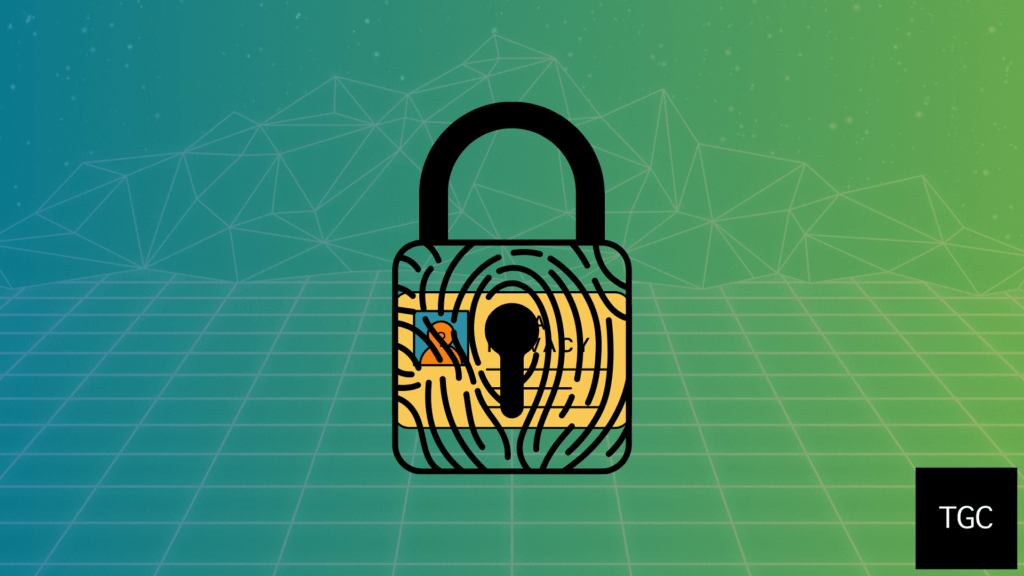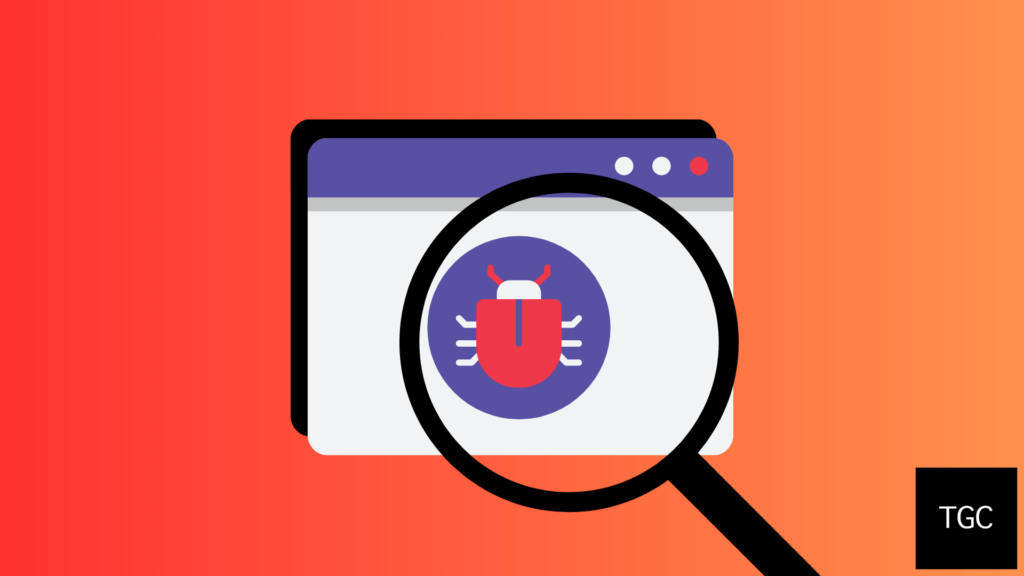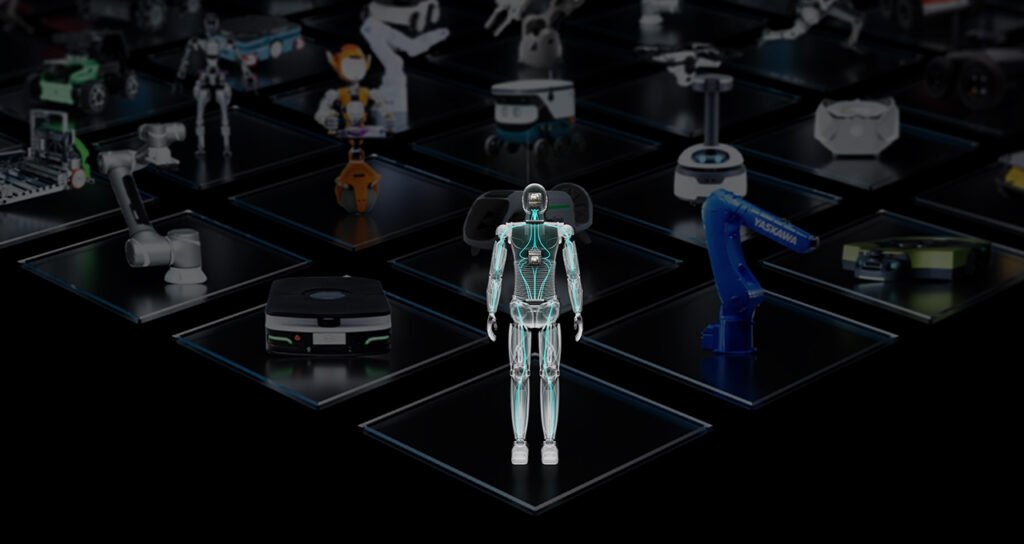In today’s interconnected world, cybersecurity has become a paramount concern for individuals, businesses, and governments alike. As our reliance on digital technologies continues to grow, so too does the prevalence and sophistication of cyber threats. This blog aims to provide an overview of the rising cybersecurity concerns and highlight the importance of robust cybersecurity measures in the digital age.

Overview of Rising Cybersecurity Concerns
Increasing Frequency of Cyber Attacks
One of the most alarming trends in recent years is the sheer increase in the number of cyber attacks. From ransomware to phishing scams, cybercriminals are constantly devising new methods to exploit vulnerabilities in systems and networks. The frequency of these attacks has surged, affecting millions of individuals and countless organizations worldwide.
The sophistication of Cyber Threats
Cyber threats are not only becoming more frequent but also more sophisticated. Advanced Persistent Threats (APTs), zero-day exploits, and polymorphic malware are just a few examples of the evolving tactics used by cybercriminals. These sophisticated attacks are designed to bypass traditional security measures, making them particularly challenging to detect and mitigate.
Target Diversity
No one is immune to cyber threats. Cybercriminals target a wide range of victims, from individuals and small businesses to large corporations and government agencies. Critical infrastructure sectors, such as healthcare, finance, and energy, are especially attractive targets due to the potential for significant disruption and financial gain.
Financial and Reputational Damage
The financial impact of cyber attacks can be devastating. According to a report by Cybersecurity Ventures, global cybercrime costs are expected to reach $10.5 trillion annually by 2025. Beyond the immediate financial losses, organizations also face long-term reputational damage, loss of customer trust, and potential legal repercussions.
Importance of Cybersecurity in the Digital Age
Protecting Sensitive Data
In the digital age, data is one of the most valuable assets. Personal information, financial records, intellectual property, and other sensitive data are prime targets for cybercriminals. Robust cybersecurity measures are essential to protect this data from unauthorized access, theft, and misuse.
Ensuring Business Continuity
For businesses, cybersecurity is not just about protecting data; it’s also about ensuring operational continuity. Cyber attacks can disrupt business operations, leading to downtime, loss of productivity, and significant financial losses. Implementing effective cybersecurity strategies helps organizations maintain business continuity and minimize the impact of potential attacks.
Safeguarding National Security
At the national level, cybersecurity is critical for safeguarding national security. Cyber attacks on critical infrastructure, such as power grids, transportation systems, and communication networks, can have far-reaching consequences. Governments must invest in cybersecurity to protect these vital systems and ensure the safety and security of their citizens.
Building Trust in Digital Ecosystems
In an increasingly digital world, trust is paramount. Consumers and businesses need to trust that their data and transactions are secure. Effective cybersecurity measures help build and maintain this trust, fostering a secure digital ecosystem where individuals and organizations can confidently engage in online activities.
High-Profile Cyberattacks
In our increasingly digital world, cyberattacks have become a significant threat to individuals, corporations, and governments alike. The years 2023 and 2024 have already witnessed several high-profile cyberattacks that have left lasting impacts on major corporations and their stakeholders. This blog will delve into recent cyberattacks, their effects on major companies, and provide case studies of significant data breaches to illustrate the gravity of these digital threats.
Recent High-Profile Cyberattacks in 2023-2024
1. SolarWinds Redux (2023)
In early 2023, a sophisticated cyberattack reminiscent of the infamous SolarWinds breach of 2020 was discovered. This attack targeted a supply chain software provider, compromising the systems of several Fortune 500 companies and government agencies. The attackers utilized advanced persistent threat (APT) tactics, embedding malicious code within software updates to gain access to sensitive data.
2. Healthcare Ransomware Attack (2023)
A major ransomware attack targeted a leading healthcare provider in mid-2023, disrupting services across multiple hospitals and clinics. The attackers demanded a hefty ransom in cryptocurrency, threatening to release sensitive patient data if their demands were not met. This attack highlighted vulnerabilities in the healthcare sector and the dire consequences of compromised patient care.
3. Financial Sector Breach (2024)
In early 2024, a coordinated cyberattack struck several major financial institutions, leading to significant data breaches and financial losses. The attackers exploited zero-day vulnerabilities in the institutions’ security systems, gaining unauthorized access to customer data, financial records, and internal communications. The breach caused widespread panic among customers and led to regulatory scrutiny.
Impact of Cyberattacks on Major Corporations
Cyberattacks can have far-reaching consequences for major corporations, affecting their financial stability, reputation, and operational efficiency. Here are some key impacts:
1. Financial Losses
Cyberattacks often result in substantial financial losses due to direct costs such as ransom payments, legal fees, and regulatory fines. Additionally, companies may face indirect costs, including lost revenue from disrupted operations and diminished customer trust.
2. Reputational Damage
A cyberattack can severely damage a company’s reputation, leading to a loss of customer confidence and trust. Negative publicity and media coverage can further exacerbate the situation, making it challenging for the company to regain its standing in the market.
3. Operational Disruption
Cyberattacks can disrupt a company’s operations, leading to downtime, loss of productivity, and compromised business processes. This disruption can have cascading effects on supply chains, customer service, and overall business continuity.
4. Regulatory and Legal Consequences
Companies that fall victim to cyberattacks may face regulatory scrutiny and legal consequences, especially if they fail to comply with data protection laws and industry regulations. This can result in hefty fines, lawsuits, and increased regulatory oversight.
Case Studies of Significant Data Breaches
1. Equifax Data Breach (2017)
While not recent, the Equifax data breach remains one of the most significant and impactful data breaches in history. In 2017, Equifax, one of the largest credit reporting agencies, suffered a breach that exposed the personal information of 147 million people, including Social Security numbers, birth dates, and addresses. The breach was attributed to a failure to patch a known vulnerability, highlighting the importance of timely software updates and robust cybersecurity practices.
2. Marriott International Data Breach (2018)
In 2018, Marriott International disclosed a data breach that affected approximately 500 million guests. The breach involved unauthorized access to the Starwood guest reservation database, which had been compromised since 2014. The attackers accessed sensitive information, including names, passport numbers, and payment card details. The breach underscored the importance of thorough security assessments, especially during mergers and acquisitions.
3. Capital One Data Breach (2019)
In 2019, Capital One experienced a data breach that exposed the personal information of over 100 million customers in the United States and Canada. The breach was the result of a misconfigured web application firewall, which allowed an attacker to access sensitive data stored on Amazon Web Services (AWS). The incident highlighted the need for robust cloud security measures and vigilant monitoring of cloud environments.
High-profile cyberattacks in 2023-2024 have demonstrated the evolving nature of digital threats and their profound impact on major corporations. As cybercriminals become more sophisticated, it is imperative for organizations to prioritize cybersecurity, invest in advanced security technologies, and foster a culture of cyber awareness. By learning from past breaches and implementing robust security measures, companies can better protect themselves and their stakeholders from the ever-present danger of cyberattacks.
Types of Cybersecurity Threats
Understanding the various types of cybersecurity threats is crucial for developing effective defence strategies. In this part of the blog, we will discuss some of the most common and dangerous types of cybersecurity threats, including Phishing and Social Engineering Attacks, Ransomware and Malware Infections, Distributed Denial-of-Service (DDoS) Attacks, Insider Threats and Employee Negligence and Advanced Persistent Threats (APTs).
1. Phishing and Social Engineering Attacks
What are They?
Phishing and social engineering attacks exploit human psychology rather than technical vulnerabilities. These attacks aim to deceive individuals into divulging sensitive information, such as login credentials, financial details, or personal information.
How Do They Work?
Phishing typically involves sending fraudulent emails that appear to come from legitimate sources, such as banks or popular websites. These emails often contain links to fake websites designed to capture the victim’s information. Social engineering attacks, on the other hand, can be more complex and involve direct interaction with the victim, such as phone calls or in-person manipulation.
In 2020, a massive phishing campaign targeted employees of a major tech company, leading to the compromise of several high-profile Twitter accounts. The attackers used social engineering techniques to gain access to internal systems.
Prevention Tips
- Educate employees about recognizing phishing emails.
- Implement multi-factor authentication (MFA).
- Regularly update and patch software.
2. Ransomware and Malware Infections
What are They?
Ransomware is a type of malware that encrypts the victim’s data and demands a ransom for the decryption key. Malware, in general, refers to any malicious software designed to cause harm to a computer system.

How Do They Work?
Ransomware typically spreads through phishing emails, malicious websites, or exploiting vulnerabilities in software. Once installed, it locks access to critical data and demands payment, usually in cryptocurrency, to unlock it. Other types of malware can steal data, spy on users, or disrupt system operations.
The WannaCry ransomware attack in 2017 affected over 200,000 computers across 150 countries, causing billions of dollars in damage.
Prevention Tips
- Regularly back up data and store it offline.
- Use reputable antivirus and anti-malware software.
- Keep software and operating systems up to date.
3. Distributed Denial-of-Service (DDoS) Attacks
What are They?
DDoS attacks aim to overwhelm a target’s online services by flooding them with excessive traffic, rendering them inaccessible to legitimate users.
How Do They Work?
Attackers use multiple compromised devices, often part of a botnet, to send a massive volume of requests to the target server or network. This overloads the system, causing it to slow down or crash.
In 2016, the Dyn DNS provider was hit by a massive DDoS attack, disrupting major websites like Twitter, Netflix, and Reddit.
Prevention Tips
- Implement DDoS protection services.
- Use load balancers and redundant network infrastructure.
- Monitor network traffic for unusual patterns.
4. Insider Threats and Employee Negligence
What are They?
Insider threats involve malicious actions by employees, contractors, or other trusted individuals within an organization. Employee negligence refers to unintentional actions that compromise security, such as falling for phishing scams or mishandling sensitive data.
How Do They Work?
Insiders with malicious intent may steal data, sabotage systems, or leak confidential information. Negligent employees might inadvertently cause security breaches by using weak passwords, losing devices, or failing to follow security protocols.
In 2019, a former employee of a financial services company was charged with stealing sensitive customer data to sell on the dark web.
Prevention Tips
- Conduct thorough background checks on employees.
- Implement strict access controls and monitoring.
- Provide regular cybersecurity training.
5. Advanced Persistent Threats (APTs)
What are They?
APTs are sophisticated, long-term cyberattacks carried out by well-funded and organized groups, often with state-sponsored backing. These attacks aim to infiltrate and remain undetected within a network for extended periods to steal sensitive information or disrupt operations.
How Do They Work?
APTs typically involve multiple stages, including initial reconnaissance, gaining access, establishing a foothold, escalating privileges, and exfiltrating data. Attackers use a combination of malware, social engineering, and exploiting vulnerabilities to achieve their objectives.
The Stuxnet worm, discovered in 2010, is believed to be an APT designed to sabotage Iran’s nuclear program by targeting industrial control systems.
Prevention Tips
- Employ advanced threat detection and response solutions.
- Regularly update and patch all systems.
- Conduct continuous network monitoring and analysis.
By understanding the different types of threats and implementing robust security measures, we can better protect our digital assets and maintain the integrity of our online environments. Stay safe, stay secure!
The Far-Reaching Consequences of Cyberattacks
In today’s digitally interconnected world, cyberattacks have become a pervasive threat, affecting individuals, businesses, and governments alike. The consequences of these attacks can be devastating, leading to significant financial losses, reputational damage, data breaches, and operational disruptions. This blog delves into the multifaceted impact of cyberattacks, emphasizing the importance of robust cybersecurity measures.
Financial and Reputational Damage to Businesses
One of the most immediate and tangible consequences of a cyberattack is the financial damage it inflicts on businesses. The costs associated with a cyber breach can be staggering, encompassing direct financial losses, regulatory fines, legal fees, and the expense of remediation efforts. According to a report by IBM, the average cost of a data breach in 2021 was $4.24 million, a figure that continues to rise as cyber threats become more sophisticated.
However, the financial impact is only part of the story. The reputational damage that follows a cyberattack can be even more detrimental. Trust is a crucial asset for any business, and a breach can severely undermine customer confidence. News of a cyberattack can spread rapidly, leading to negative publicity and a tarnished brand image. In some cases, the damage to a company’s reputation can be so severe that it struggles to retain existing customers and attract new ones, ultimately affecting its long-term viability.
Data Loss and Privacy Violations
Data is often referred to as the new oil, and for good reason. In the digital age, data drives business decisions, customer interactions, and operational efficiencies. When a cyberattack results in data loss, the consequences can be dire. Sensitive information, such as customer details, financial records, and intellectual property, can be stolen or corrupted, leading to significant operational challenges.
Moreover, data breaches often lead to privacy violations. When personal information is compromised, individuals may face identity theft, financial fraud, and other forms of exploitation. Businesses that fail to protect customer data may find themselves facing legal actions and hefty fines under data protection regulations like the General Data Protection Regulation (GDPR) and the California Consumer Privacy Act (CCPA). Beyond the legal ramifications, the loss of personal data erodes customer trust and loyalty, which can have long-lasting effects on a business’s reputation and bottom line.
Operational Disruptions and Downtime
Cyberattacks can bring business operations to a grinding halt. Ransomware attacks, for instance, can lock users out of critical systems and demand payment for the decryption key. During the downtime, businesses may be unable to process transactions, communicate with customers, or access essential data, leading to significant operational disruptions.
The impact of such disruptions extends beyond immediate financial losses. Prolonged downtime can affect supply chains, delay product deliveries, and disrupt service provision, leading to dissatisfied customers and potential loss of business. In industries where time is of the essence, such as healthcare or finance, operational disruptions can have life-threatening or catastrophic consequences.
Cybersecurity Solutions for Businesses
To safeguard sensitive data and maintain the trust of customers, businesses must adopt a multi-faceted approach to cybersecurity. Here, we explore essential cybersecurity solutions that every business should consider implementing.
Implementing Robust Firewalls and Intrusion Detection Systems
The first line of defence in cybersecurity is often a robust firewall. Firewalls serve as a barrier between your internal network and external threats, monitoring and controlling incoming and outgoing network traffic based on predetermined security rules. However, firewalls alone are not enough. Intrusion Detection Systems (IDS) complement firewalls by monitoring network traffic for suspicious activity and potential threats. Together, these tools can significantly reduce the risk of unauthorized access and data breaches.
Importance of Regular Software Updates and Patch Management
Software vulnerabilities are a common entry point for cyber attackers. Regular software updates and patch management are crucial in closing these security gaps. Vendors frequently release patches to fix security flaws, and failing to apply these updates can leave your systems exposed. Implementing an automated patch management system ensures that all software is up-to-date, reducing the risk of exploitation from known vulnerabilities.
Employee Training and Awareness Programs
Human error is often the weakest link in cybersecurity. Employees can inadvertently open the door to cyber threats through phishing emails, weak passwords, and other risky behaviours. Comprehensive employee training and awareness programs are essential in educating staff about cybersecurity best practices. Regular training sessions, simulated phishing attacks, and clear policies on data handling can empower employees to act as the first line of defence against cyber threats.
Adopting Multi-Factor Authentication (MFA)
Passwords alone are no longer sufficient to protect sensitive information. Multi-Factor Authentication (MFA) adds an extra layer of security by requiring users to provide two or more verification factors to gain access to a system. These factors typically include something the user knows (password), something the user has (security token or smartphone), and something the user is (biometric verification). Implementing MFA can significantly reduce the risk of unauthorized access, even if passwords are compromised.

Data Encryption and Secure Backup Solutions
Data encryption is a critical component of a robust cybersecurity strategy. Encrypting data ensures that even if it falls into the wrong hands, it remains unreadable without the decryption key. Both data at rest (stored data) and data in transit (data being transmitted) should be encrypted to protect sensitive information.
In addition to encryption, secure backup solutions are essential. Regularly backing up data and storing it in a secure, off-site location ensures that you can recover quickly in the event of a ransomware attack or other data loss incidents. Implementing a 3-2-1 backup strategy (three copies of your data, on two different media, with one copy off-site) is a recommended practice.
Developing Incident Response Plans
Despite the best preventive measures, cyber incidents can still occur. Developing a comprehensive Incident Response Plan (IRP) is crucial for minimizing damage and ensuring a swift recovery. An effective IRP outlines the steps to be taken in the event of a cyber incident, including identification, containment, eradication, and recovery. It also defines roles and responsibilities, communication protocols, and post-incident analysis procedures. Regularly testing and updating the IRP ensures that your team is prepared to respond effectively to any cyber threat.
Cybersecurity Solutions for Individuals: Protecting Your Digital Life
In today’s digital age, cybersecurity is no longer just a concern for businesses and governments. Individuals, too, are increasingly targeted by cybercriminals looking to steal personal information, financial data, and identities. Protecting yourself online is essential, and fortunately, there are several effective strategies you can employ to safeguard your digital life. In this blog, we’ll explore some key cybersecurity solutions for individuals, including the use of strong, unique passwords, recognizing phishing scams, the importance of regular software updates, safeguarding personal information, and secure use of public Wi-Fi and VPNs.
Using Strong, Unique Passwords and Password Managers
One of the simplest yet most effective ways to protect your online accounts is by using strong, unique passwords for each site and service you use. A strong password typically includes a mix of upper and lower-case letters, numbers, and special characters. Avoid using easily guessable information such as birthdays, names, or common words.
However, remembering multiple complex passwords can be challenging. This is where password managers come in handy. Password managers securely store and generate strong, unique passwords for each of your accounts. They can also autofill login details, making it easier and faster to access your accounts without compromising security. Popular password managers include LastPass, 1Password, and Bitwarden.
Recognizing and Avoiding Phishing Scams
Phishing scams are one of the most common methods cybercriminals use to steal personal information. These scams often come in the form of emails, text messages, or websites that appear to be from legitimate sources but are designed to trick you into providing sensitive information.
To recognize and avoid phishing scams, be wary of unsolicited messages asking for personal or financial information. Look for signs such as poor grammar, generic greetings, and suspicious links. Always verify the sender’s email address and, if in doubt, contact the organization directly using a trusted method. Additionally, enable two-factor authentication (2FA) for an added layer of security.
Importance of Regular Software Updates and Antivirus Protection
Keeping your software up to date is crucial for maintaining cybersecurity. Software updates often include patches for security vulnerabilities that cybercriminals can exploit. Regularly updating your operating system, web browsers, and applications helps protect against these threats.
Antivirus protection is another essential component of cybersecurity. Antivirus software can detect and remove malware, ransomware, and other malicious programs that may compromise your system. Ensure your antivirus software is always up to date and perform regular scans to detect any potential threats.
Safeguarding Personal Information Online
Protecting your personal information online is vital to prevent identity theft and other cybercrimes. Be cautious about the information you share on social media and other online platforms. Avoid posting sensitive details such as your home address, phone number, or financial information.
Use privacy settings to control who can see your posts and personal information. Be mindful of the permissions you grant to apps and websites, and only provide the necessary information. Regularly review your online accounts and remove any unnecessary data.
Secure Use of Public Wi-Fi and VPNs
Public Wi-Fi networks, such as those found in cafes, airports, and hotels, are convenient but can be insecure. Cybercriminals can intercept data transmitted over these networks, potentially gaining access to your personal information.
To stay safe on public Wi-Fi, avoid accessing sensitive accounts or conducting financial transactions. Use a Virtual Private Network (VPN) to encrypt your internet connection, making it more difficult for cybercriminals to intercept your data. VPNs create a secure tunnel between your device and the internet, protecting your online activities from prying eyes. Some reputable VPN services include NordVPN, ExpressVPN, and CyberGhost.
Latest Innovations in Cybersecurity Technology
1. Artificial Intelligence and Machine Learning
Artificial Intelligence (AI) and Machine Learning (ML) are revolutionizing cybersecurity by enabling more proactive and adaptive defence mechanisms. These technologies can analyse vast amounts of data to identify patterns and anomalies indicative of potential threats. AI-driven security solutions can predict and respond to cyberattacks in real time, significantly reducing response times and mitigating damage.
2. Zero Trust Architecture
The Zero Trust model, which operates on the principle of “never trust, always verify,” is gaining widespread adoption. This approach requires strict identity verification for every person and device attempting to access resources on a network, regardless of whether they are inside or outside the network perimeter. Zero Trust helps in minimizing the risk of internal and external threats.
3. Quantum Cryptography
Quantum cryptography is emerging as a game-changer in securing communications. It leverages the principles of quantum mechanics to create encryption methods that are theoretically unbreakable. As quantum computing advances, traditional encryption methods may become vulnerable, making quantum cryptography an essential innovation for future-proofing cybersecurity.
4. Blockchain for Enhanced Security
Blockchain technology, known for its decentralized and immutable nature, is being explored for various cybersecurity applications. It can enhance data integrity, secure transactions, and provide transparent and tamper-proof records. Blockchain is particularly promising in securing supply chains, digital identities, and IoT devices.
Government Regulations and Policies on Cybersecurity
1. The Cybersecurity Maturity Model Certification (CMMC)
The U.S. Department of Defence (DoD) has introduced the Cybersecurity Maturity Model Certification (CMMC) to ensure that defence contractors meet specific cybersecurity standards. The CMMC framework aims to protect sensitive information by requiring contractors to implement robust cybersecurity practices.
2. The European Union’s NIS2 Directive
The European Union’s Network and Information Security (NIS2) Directive is an update to the original NIS Directive, aimed at improving cybersecurity across member states. It expands the scope of critical sectors covered and introduces stricter security requirements and incident reporting obligations.
3. National Cybersecurity Strategies
Countries worldwide are developing and updating national cybersecurity strategies to address evolving threats. These strategies often include measures to enhance cybersecurity infrastructure, promote public-private partnerships, and invest in cybersecurity education and workforce development.
Insights from Cybersecurity Experts and Industry Leaders
1. Emphasis on Cyber Resilience
Experts emphasize the importance of cyber resilience—the ability to prepare for, respond to, and recover from cyber incidents. Organizations are encouraged to develop comprehensive incident response plans, conduct regular drills, and invest in technologies that enhance their resilience.
2. The Human Element in Cybersecurity
Industry leaders highlight the critical role of the human element in cybersecurity. Employee training and awareness programs are essential in preventing social engineering attacks, such as phishing. A culture of cybersecurity awareness can significantly reduce the risk of human error.
3. Collaboration and Information Sharing
Collaboration between organizations, industries, and governments is vital in combating cyber threats. Information-sharing initiatives, such as threat intelligence-sharing platforms, enable stakeholders to stay informed about emerging threats and collectively enhance their defence mechanisms.
Emerging Threats and Predictions for the Future
1. Ransomware Evolution
Ransomware attacks continue to evolve, with cybercriminals adopting more sophisticated techniques. Double extortion, where attackers not only encrypt data but also threaten to leak it, is becoming more common. Organizations must enhance their defences and have robust backup and recovery plans in place.
2. Threats to Critical Infrastructure
Critical infrastructure, including energy, transportation, and healthcare sectors, remains a prime target for cyberattacks. The increasing interconnectedness of these systems through IoT devices amplifies the potential impact of such attacks. Strengthening the cybersecurity of critical infrastructure is a top priority.
3. Deepfakes and Disinformation
The rise of deepfake technology poses significant challenges in distinguishing genuine content from manipulated media. Deepfakes can be used for disinformation campaigns, identity theft, and social engineering attacks. Developing technologies and strategies to detect and mitigate deepfakes is crucial.
4. The Impact of 5G
The rollout of 5G networks brings new opportunities and challenges. While 5G promises faster and more reliable connectivity, it also introduces new attack vectors. Securing 5G infrastructure and addressing potential vulnerabilities is essential to harness its benefits safely.
The Power of Proactive Cybersecurity: Safeguarding Your Digital World
From multinational corporations to individual users, everyone is a potential target for cybercriminals. The stakes are high, and the consequences of a cyber-attack can be devastating, ranging from financial loss to reputational damage. This blog aims to encourage proactive cybersecurity measures and highlight the importance of staying informed and vigilant against cyber threats.
Why Proactive Cybersecurity Matters
- Prevention is Better Than Cure: Proactive cybersecurity involves implementing measures to prevent cyber-attacks before they occur. This approach is far more effective and less costly than dealing with the aftermath of a security breach. Think of it as installing a robust lock on your door rather than waiting for a burglar to break in.
- Protecting Sensitive Information: In an era where data is the new oil, safeguarding sensitive information is paramount. Proactive measures ensure that personal, financial, and business data remains secure, thereby maintaining trust and credibility.
- Compliance and Regulations: Many industries are governed by stringent cybersecurity regulations. Proactively adhering to these regulations not only helps avoid hefty fines but also enhances your organization’s reputation as a responsible entity.
- Business Continuity: Cyber-attacks can disrupt business operations, leading to significant downtime. Proactive cybersecurity ensures that your business can continue to operate smoothly, even in the face of potential threats.
Encouragement for Proactive Cybersecurity Measures
- Regularly Update Software: One of the simplest yet most effective proactive measures is to keep your software up-to-date. Regular updates often include patches for security vulnerabilities that cybercriminals could exploit.
- Implement Strong Password Policies: Encourage the use of complex passwords and consider multi-factor authentication (MFA) for an added layer of security. Password managers can also help in maintaining strong, unique passwords for different accounts.
- Employee Training: Human error is often the weakest link in cybersecurity. Regular training sessions can educate employees about the latest cyber threats and best practices, making them the first line of defence against cyber-attacks.
- Network Security: Invest in robust firewall and antivirus solutions. Regularly monitor your network for unusual activities and conduct periodic security audits to identify and rectify vulnerabilities.
- Backup Data: Regularly backing up data ensures that you can quickly recover in case of a ransomware attack or data breach. Store backups in a secure, offsite location for added protection.
Staying Informed and Vigilant Against Cyber Threats
- Subscribe to Cybersecurity News: Stay updated with the latest cybersecurity news and trends. Websites like KrebsOnSecurity, Threatpost, and official government cybersecurity advisories can provide valuable insights.
- Join Cybersecurity Communities: Online forums and communities like Reddit’s r/cybersecurity or professional networks like ISACA can be excellent resources for staying informed and sharing knowledge.
- Regular Security Audits: Conduct regular security audits to identify vulnerabilities and assess the effectiveness of your cybersecurity measures. Third-party audits can provide an unbiased evaluation.
- Incident Response Plan: Have a well-defined incident response plan in place. This plan should outline the steps to be taken in the event of a cyber-attack, including communication protocols and recovery procedures.
- Use Threat Intelligence: Leverage threat intelligence services to gain insights into potential threats. These services can provide real-time information on emerging threats, helping you to stay one step ahead of cybercriminals.
Conclusion
In the digital age, cybersecurity is an ongoing process that requires constant vigilance and proactive measures. By staying informed and implementing robust cybersecurity practices, you can significantly reduce the risk of falling victim to cyber-attacks. Remember, the best defence is a good offence. So, take charge of your cybersecurity today and safeguard your digital world for a safer tomorrow.
In future posts, we will delve deeper into specific cybersecurity threats and explore practical solutions to mitigate these risks. Stay tuned for more insights and tips on how to navigate the complex world of cybersecurity.
If you are interested in upcoming new technologies and news then you should read our article on Recent Developments in Quantum Computing, click on the post below:
If you liked this article, share it with your friends who like science and technology. If you want to read more articles and web stories like this, click the link below.










2 Comments